Kamairicha Shibamoto’s Aged Teas: Depth, Time, and Aroma [Pan-Fired Tea, Shizuoka]
![Kamairicha Shibamoto’s Aged Teas: Depth, Time, and Aroma [Pan-Fired Tea, Shizuoka]](https://ochatimes.com/en/wp-content/uploads/sites/3/2023/09/shibam111.jpg)
In Japan, tea is at its most enchanting during the shincha (the year’s first harvested buds of tea—also called ‘new harvest tea’ or ‘first-flush tea’) season, which runs from April to May. At this time of year, freshly harvested leaves offer a vibrant fragrance and a rich, delicate umami that can only be enjoyed when tea is in its prime. In contrast, teas that are carefully stored and aged to develop deeper aromas and flavours—distinct from those of first flush tea—are known as aged tea.
For this article, we visited Kamairicha Shibamoto, a producer dedicated to crafting aged tea. Shibamoto’s teas are made by combining the traditional kamairi-cha (pan-fired tea) techniques he learned in Miyazaki—one of Japan’s leading pan-fired tea regions—with his own unique ageing methods. The exceptional quality of his work is clear from the accolades he has earned, including the top gold prize at the Black Tea Grand Prix, as well as his successful exports to Poland. His teas continue to gain recognition both in Japan and overseas.
In this interview, we explore how Toshifumi Shibamoto first encountered kamairi–cha (pan-fired tea) and delve into the distinctive appeal of aged tea.
Contents
- 1 About Kamairicha Shibamoto
- 2 Introducing Kamairicha Shibamoto’s Teas
- 3 Interview: Enchanted by Kamairi-cha : Aged Teas by Master Toshifumi Shibamoto
- 3.1 Why Mr. Shibamoto Chose Kamairi-cha – His Commitment to a Tea Representing Less Than 1% of Japan’s Production
- 3.2 Twenty Years Between Shizuoka and Miyazaki: Discoveing the Art of Aging
- 3.3 The Aged Teas of Master Shibamoto: Time and Nature Woven Into a Singular Aroma
- 3.4 Driven to Bring Joy: Shibamoto’s Evolving Tea Craft. Connecting People with Teas Yet to Be Discovered
- 4 Information of Kamairicha Shibamoto
About Kamairicha Shibamoto
Kamairicha Shibamoto is a tea farm based in Makinohara City, Shizuoka Prefecture, where cultivation, processing, and sales are all carried out in-house.
The farm specialises in kamairi-cha—a rare pan-fired Japanese tea that accounts for less than one per cent of the nation’s total production—while developing its own distinctive approach to tea-making. The current owner is Toshifumi Shibamoto, the third-generation head of the family.
The Shibamoto family were historically landowners in Katsumata,once part of Haibara Town. Toshifumi’s great-grandfather, Gizaburo Shibamoto, served as the first chairman of the ‘Marugo Agricultural Processing Cooperative’, a group formed by five local producers. Following Japan’s post-war land reform, Toshifumi’s grandfather, Jitsuo, established the family’s tea-growing business, which continues to this day.
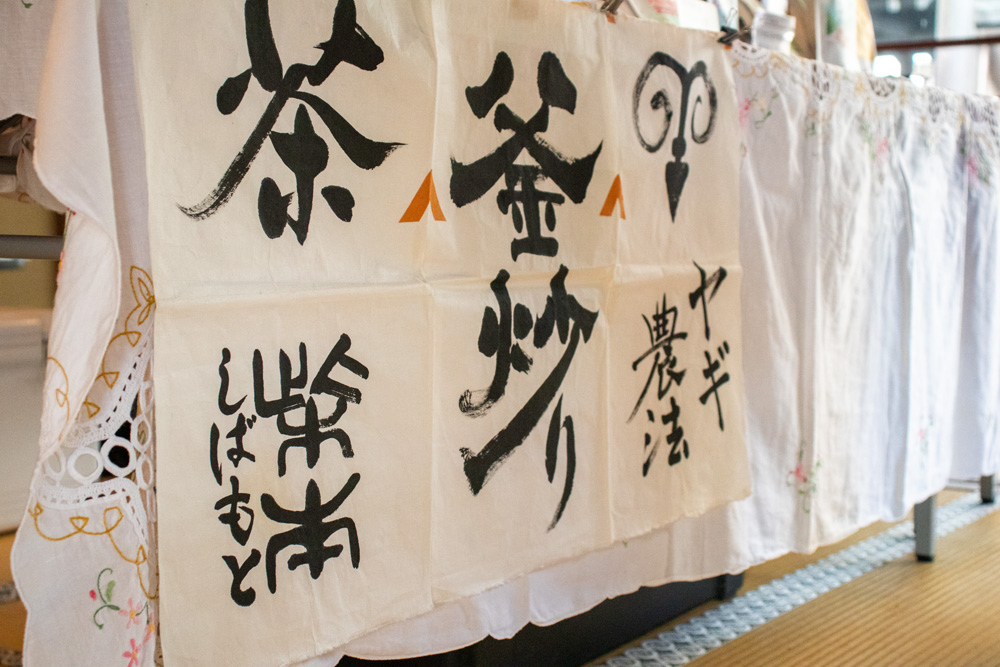
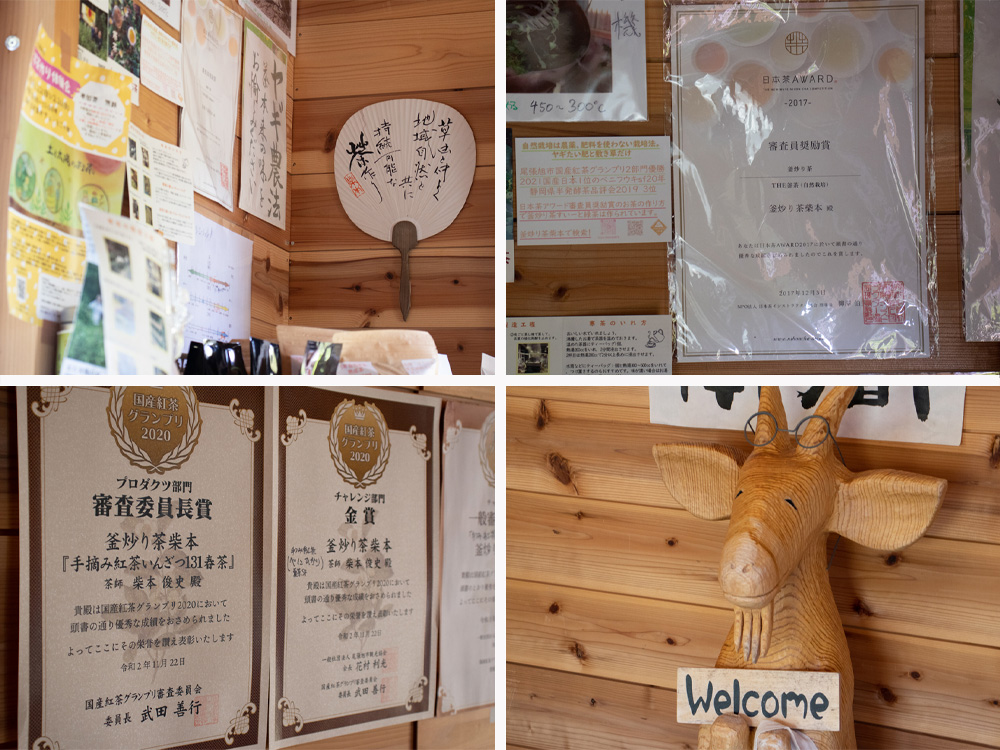 ▲’Kamairicha Shibamoto’ is a new brand created by the third-generation owner, Toshifumi Shibamoto.
▲’Kamairicha Shibamoto’ is a new brand created by the third-generation owner, Toshifumi Shibamoto.
In Shibamoto’s tea fields, tea is grown in harmony with nature using a completely chemical-free approach—no pesticides and no fertilisers. Goats roam between the rows, eating naturally growing grasses, plants, and insects. Their manure, once digested, becomes nourishment for microorganisms in the soil.
Shibamoto refers to this sustainable, self-contained system of cultivation as his ‘Goat Farming Method’, a circular agricultural practice that supports a vibrant, aromatic tea.
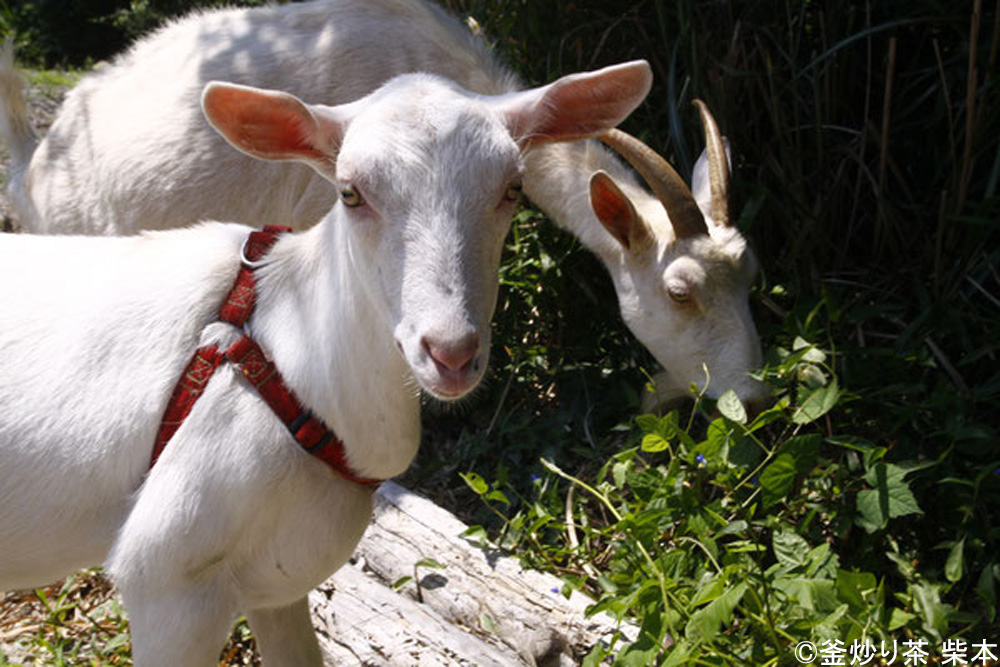
Introducing Kamairicha Shibamoto’s Teas
Kamairicha Shibamoto specialises in kamairicha, crafted by heating freshly picked leaves in a hot, round iron pan. The result is a tea with a clear, bright water color, a naturally derived, elegant aroma, and a clean, refreshing finish.
In addition to kamairicha, they offer a wide and diverse range of teas, including aged green tea, oolong tea, black tea, white tea, and floral tea.
These products can be purchased through their online shop, at the reception of Daichi no Chanoma, and at the Yotteke market at the Makinohara City General Tourist Centre.
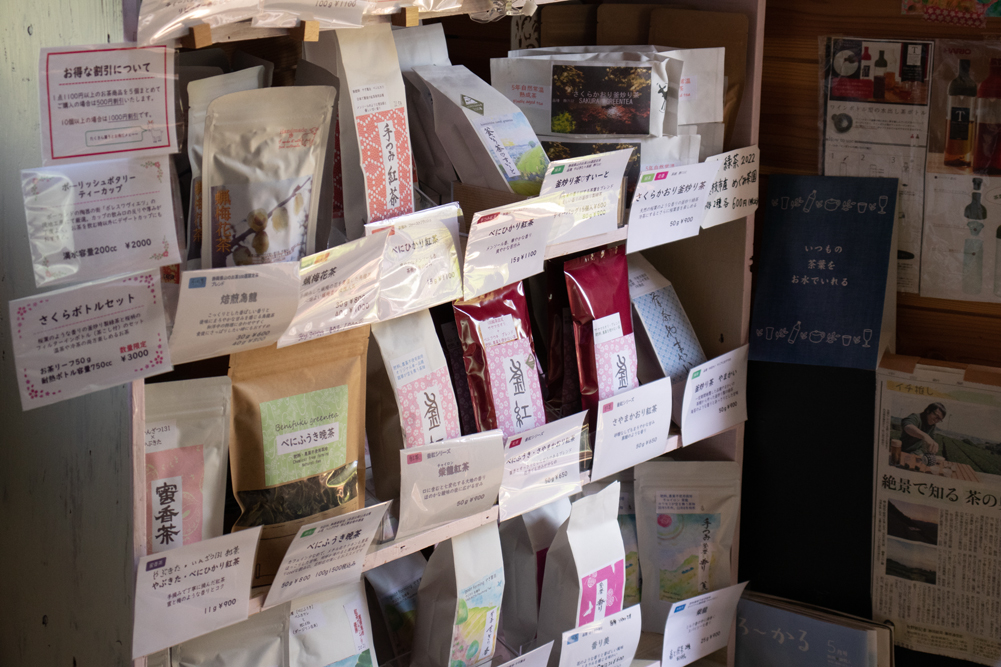
Their craftsmanship has earned high acclaim both in Japan and abroad, with established export records to Poland. Shibamoto has visited Poland around four times, and plans are underway to promote Japanese tea locally in the future.
(During an interview with Takayanagi Seicha, President Takayanagi also mentioned that they have staff stationed in Poland who regularly carry out Japanese tea promotion. This suggests that the demand for Japanese tea in Poland is both genuine and growing.)
Below is a brief introduction to some of the teas produced by Kamairicha Shibamoto.
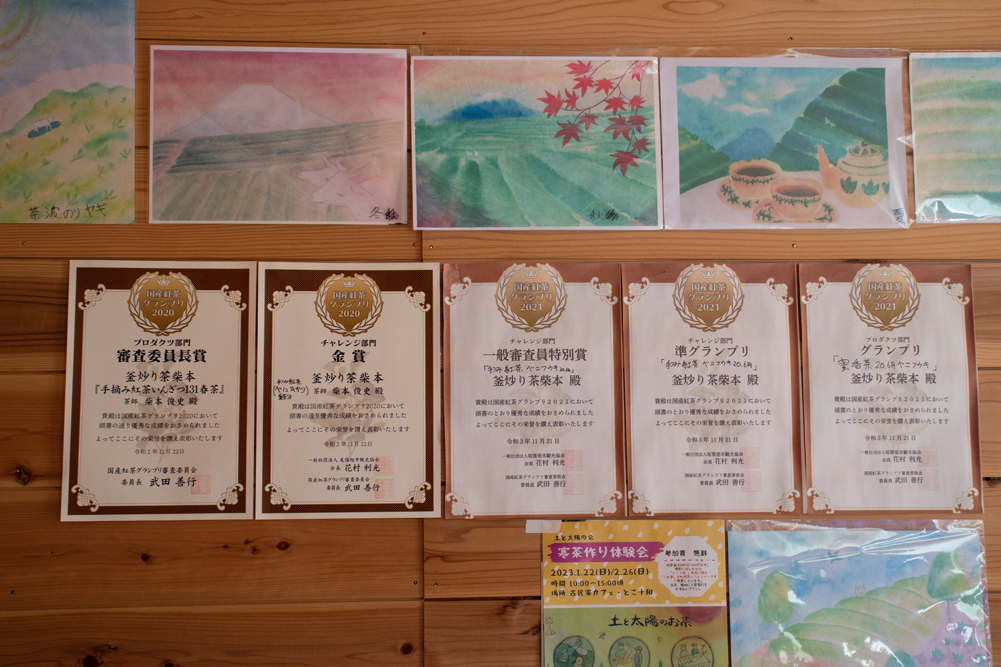 ▲Kamairicha Shibamoto has received numerous awards, including the Grand Prize in the Domestic Black Tea Grand Prix 2021 (Products Division).
▲Kamairicha Shibamoto has received numerous awards, including the Grand Prize in the Domestic Black Tea Grand Prix 2021 (Products Division).
Mikkoucha (honey-scented tea) – Benifuuki Black Tea
This black tea is crafted from carefully hand-picked leaves of the Benifuuki tea cultivar, aged for a full year before being gently roasted. It offers a sweet, refreshing aroma reminiscent of muscat grapes.
For a delightful twist, brew it slightly stronger, chill it thoroughly, and enjoy it much like champagne.
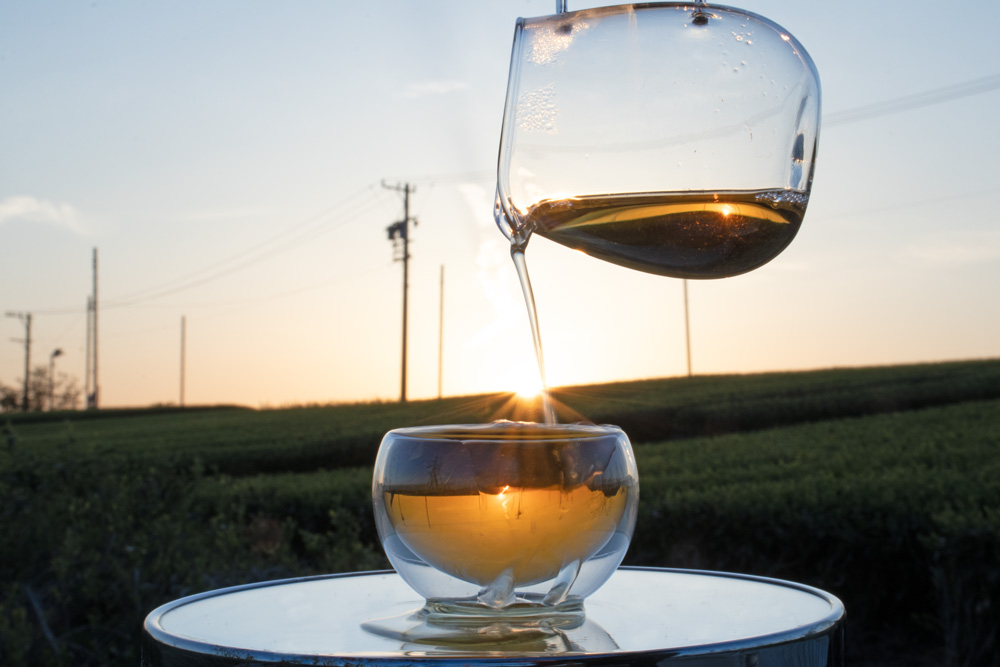
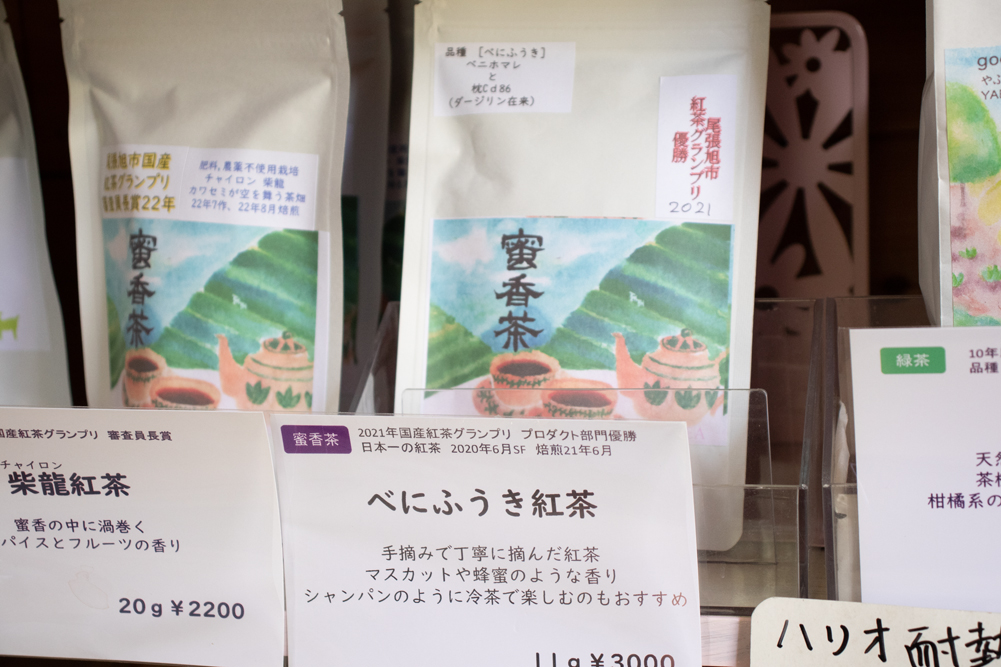
Six-Year Aged White Tea
These tea leaves are sun-dried after harvest and stored at room temperature in wooden tea boxes, where they mature for six years. The result is a white tea with a rich, brandy-like aroma.
It can be easily brewed with boiling water and enjoyed over multiple infusions, each offering a refined depth of flavour.
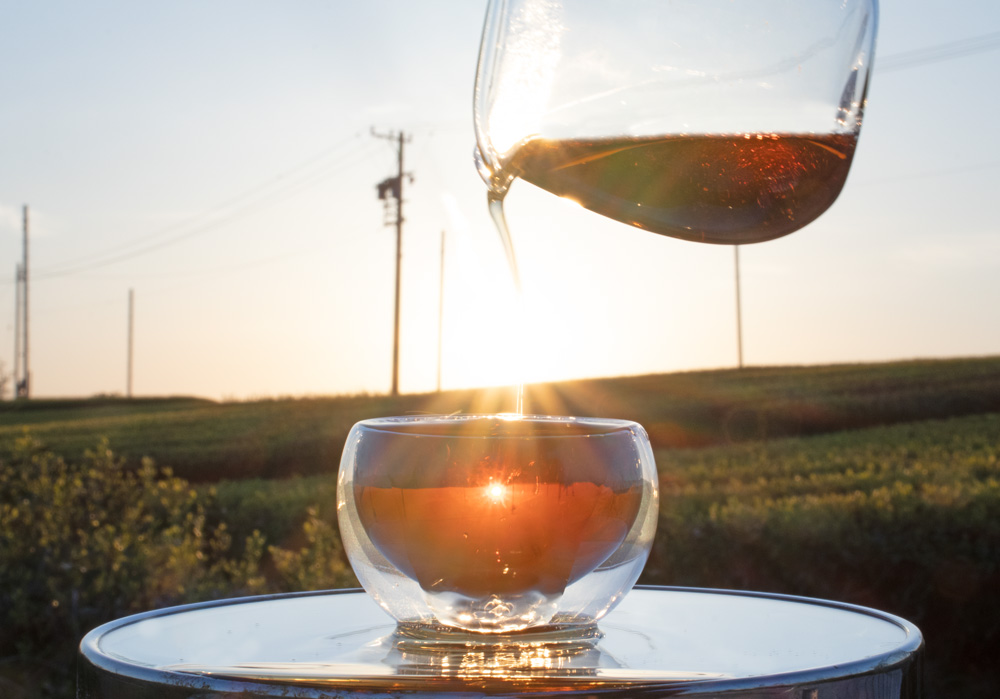
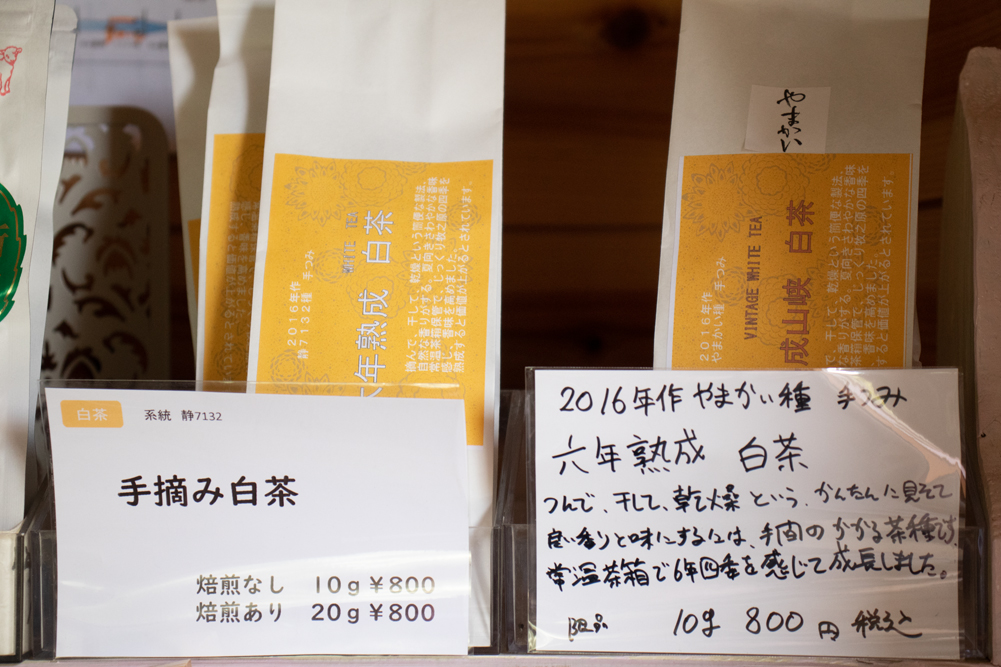
Chailon – Original Cultivar Oolong Tea
This oolong tea delivers a layered flavour profile, where gentle, milky notes intertwine with subtle spice.
It is produced using Chailon, an original tea cultivar planted by Mr Shibamoto himself, driven by his conviction that ‘this is a tea from which truly delicious oolong can be made.’
It is especially recommended for fans of Taiwanese Dong Ding oolong.
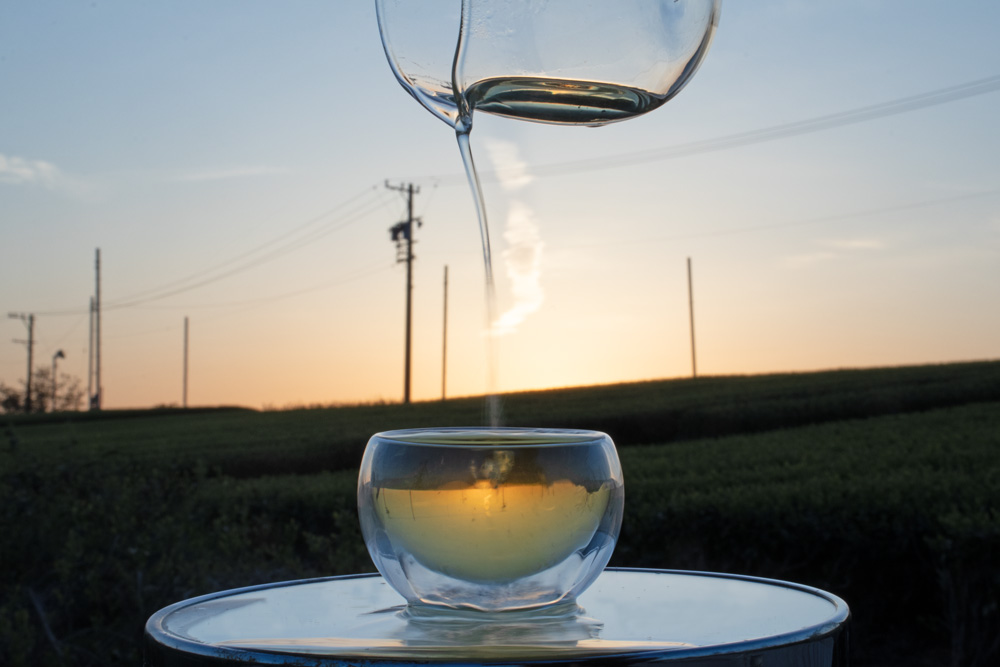
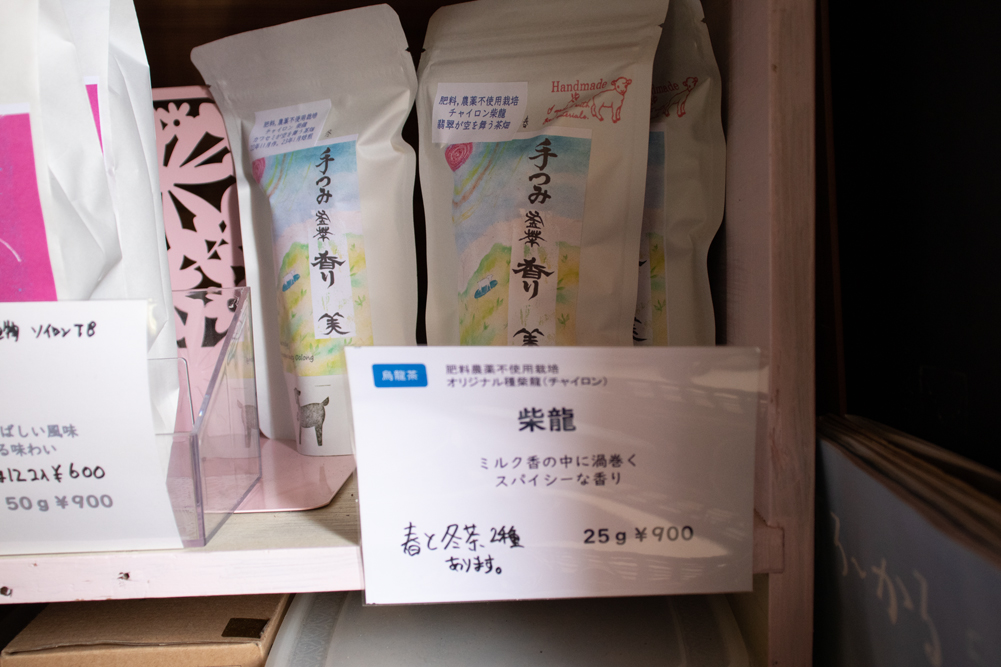
Kamairicha ‘Sweet’ Green Tea
A Kamairi-cha(pan-fired) green tea made from a blend of the Yabukita cultivar and Shizu 7132, known for its delicate sakura leaf aroma. Upon sipping, a refreshing flavour unfolds, accompanied by a notes of cherry leaf.
It pairs exceptionally well with rich dishes and has been selected as one of the ‘Shizuoka 100 Mountain Teas.’
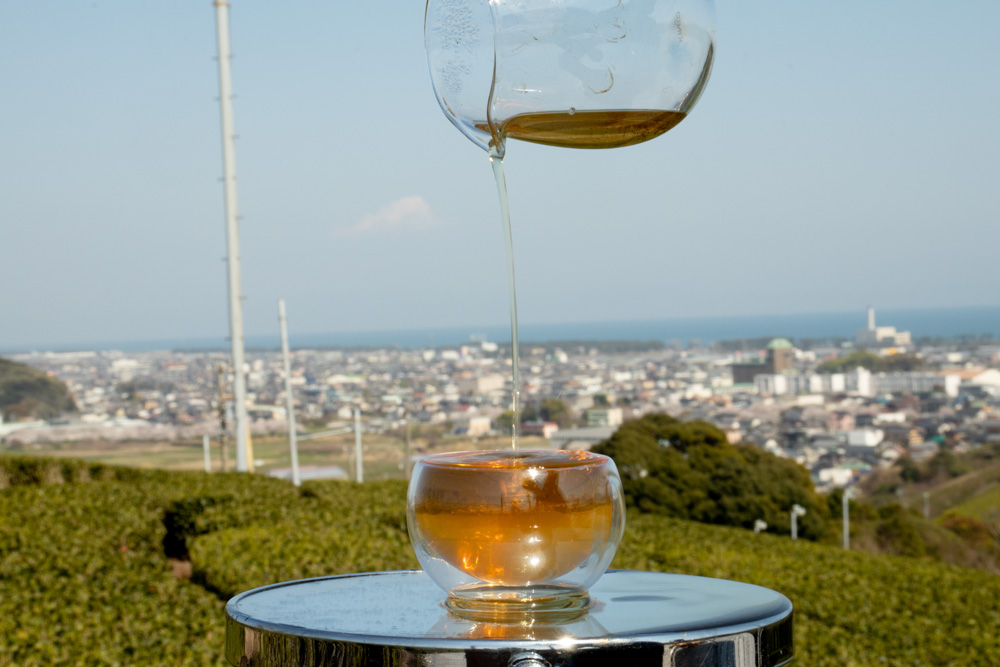
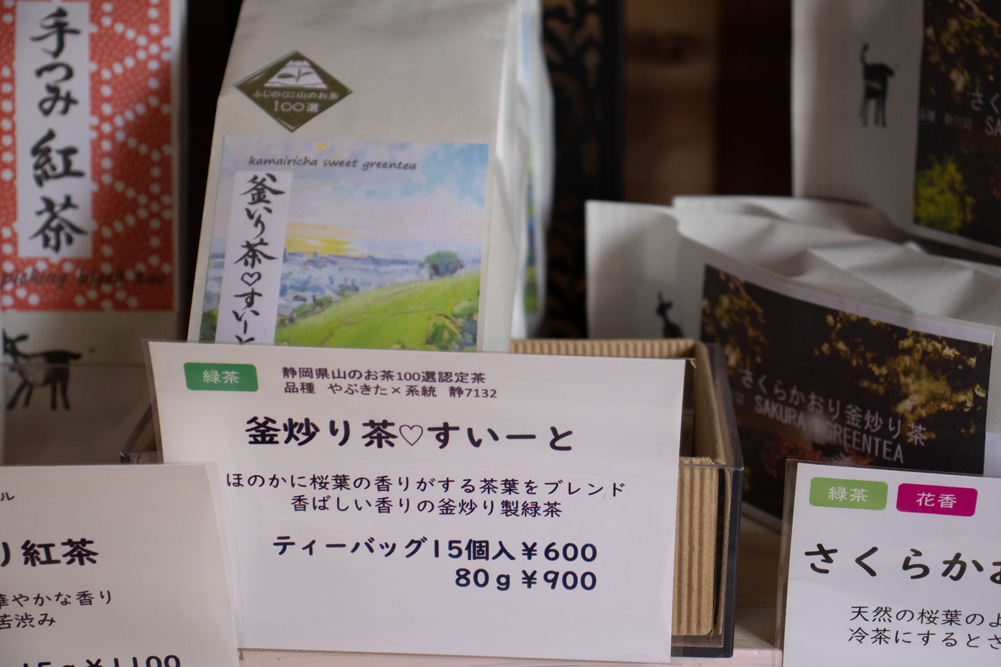
Interview: Enchanted by Kamairi-cha : Aged Teas by Master Toshifumi Shibamoto
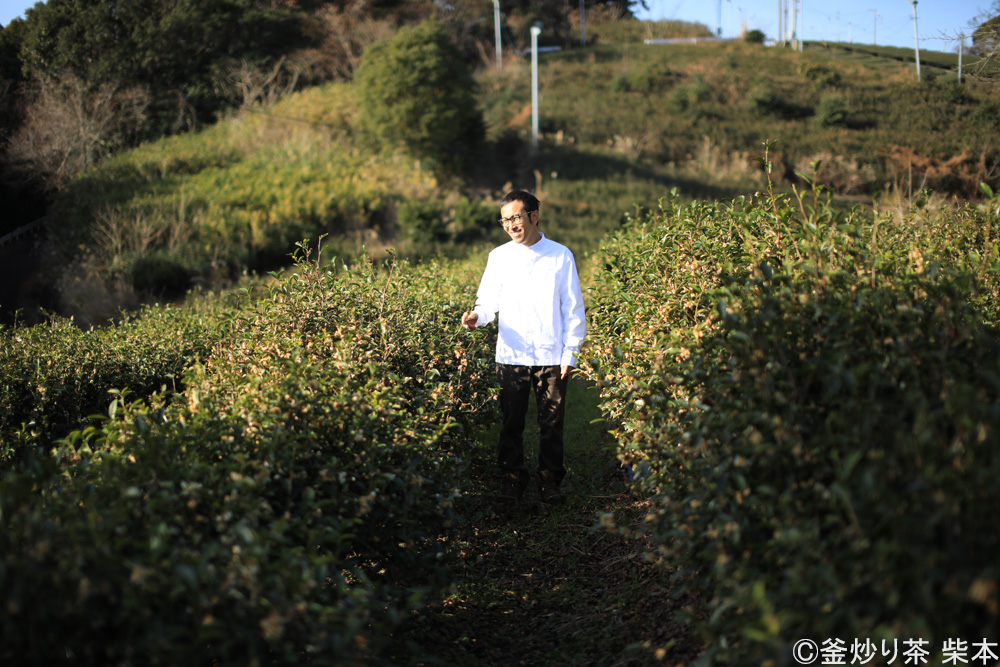
We spoke with Toshifumi Shibamoto, tea master and representative of Kamairicha Shibamoto.
Why Mr. Shibamoto Chose Kamairi-cha – His Commitment to a Tea Representing Less Than 1% of Japan’s Production
–Kamairi-cha is said to be an exceptionally rare tea, accounting for less than 1% of Japan’s total production. What led you to choose kamairi-cha, and why did you decide to make it yourself?
There are many ways to sell tea. Among them, if I were to name one reliable approach, it would be creating aromatic teas that bring out the unique character of each cultivar, and offering them with genuine care while engaging directly with customers.
In reality, this method often works well. Yet, alongside this, I wanted to find my own approach to making tea and sharing it with others. It was during this search—while exploring a wide variety of teas—that I encountered kamairi-cha.
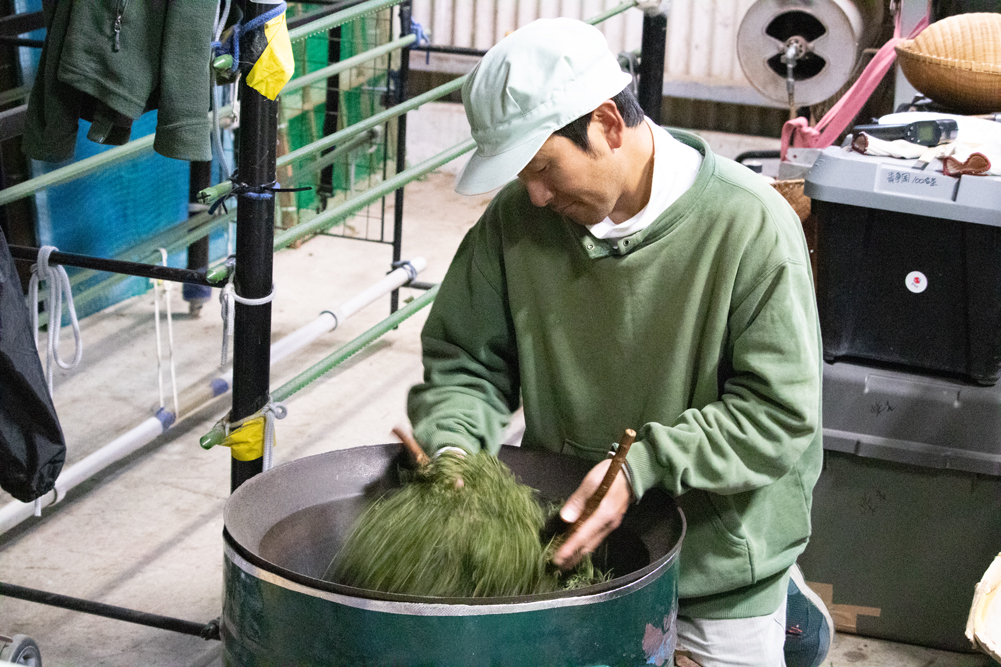
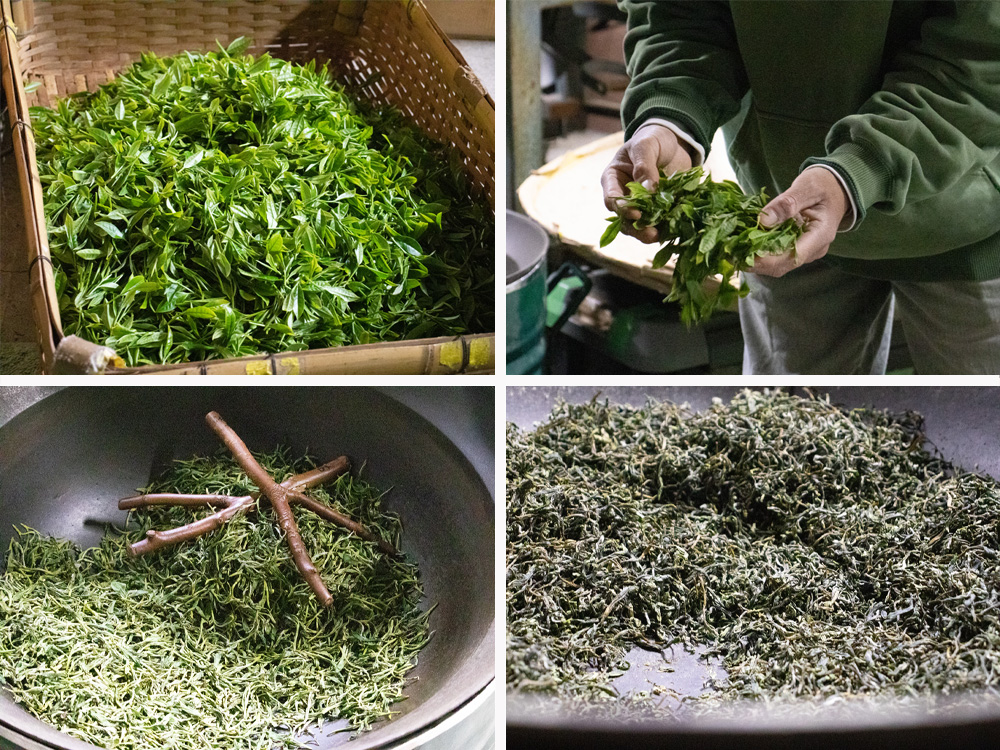
I first came across kamairi-cha when I was in secondary school. Wanting to learn more about it, I phoned the late Mr. Seiji Ogawa, who was known as a leading promoter of the Aoyanagi-style kamairi-cha method.
Mr. Ogawa generously visited our school club and taught us everything—from the history of kamairi-cha to how to brew it properly. I was truly moved at the time (laughs).
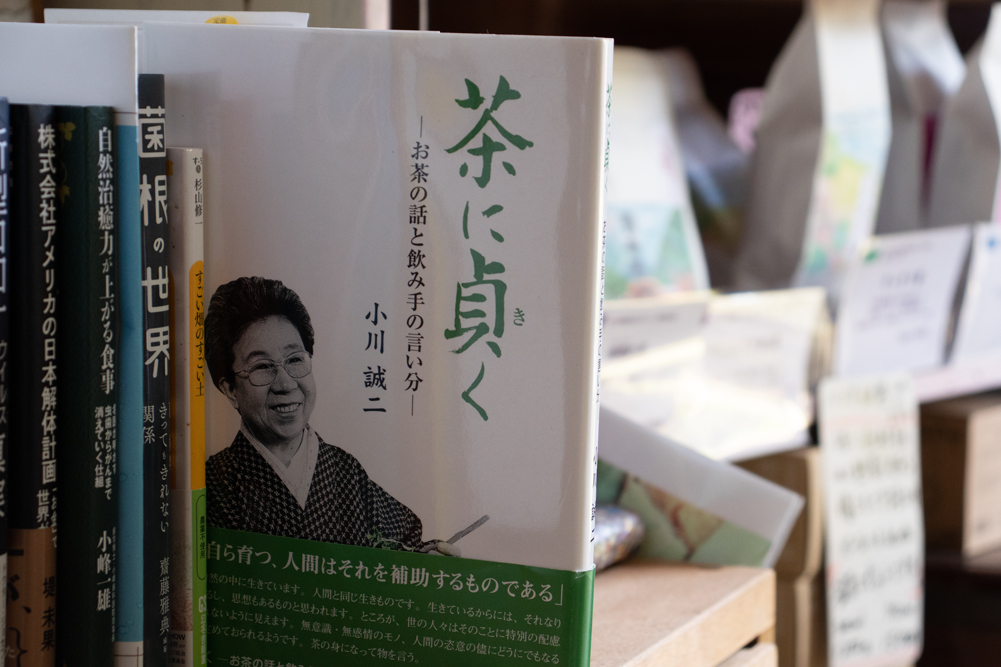 ▲At Mr. Shibamoto’s shop, you can find ‘Cha ni Kiku’, a book written by the late Mr. Seiji Ogawa.
▲At Mr. Shibamoto’s shop, you can find ‘Cha ni Kiku’, a book written by the late Mr. Seiji Ogawa.
Under Mrs. Ogawa’s guidance, I started serving the kamairi-cha I had learnt to make to people around me, and everyone absolutely loved it. Even professional tea merchants were surprised, saying, ‘This is delicious!’
Despite being such an enchanting tea, it was surprisingly difficult to find in Shizuoka. I began to question why this was the case.
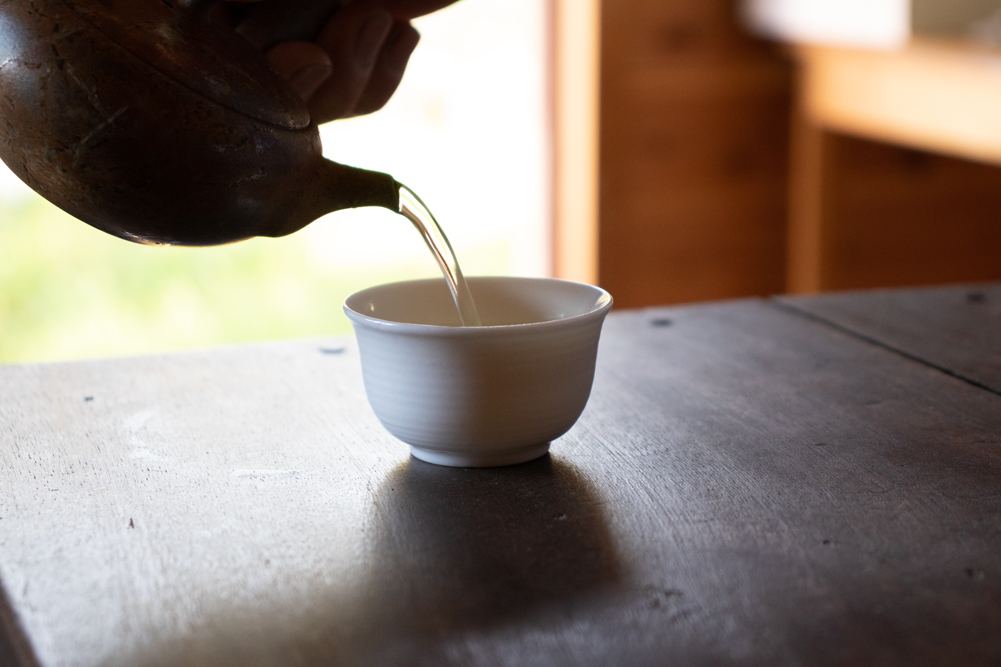
–Did you already know in secondary school that you wanted to pursue a career in tea making?
Yes. At Ogasa High School in Kikugawa City, my alma mater, we had tea fields, a processing factory, lessons taught by specialists, and a full range of books. It was a rich environment where you could learn everything about tea—from theory to hands-on practice.
For anyone aspiring to become a tea producer, it was an incredibly fortunate setting. After graduating, I chose to continue my path by moving to Miyazaki, the heartland of kamairi-cha production.
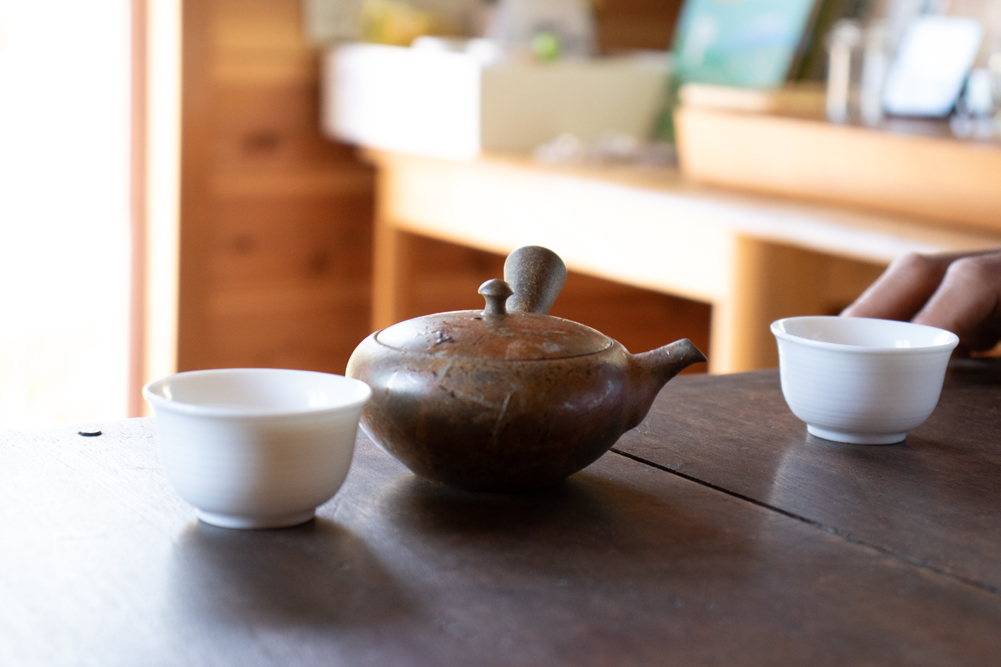
Twenty Years Between Shizuoka and Miyazaki: Discoveing the Art of Aging
Before moving to Miyazaki, I spent around two years studying at the Shizuoka Tea Research Centre, gaining a deep understanding of the current landscape and history of Shizuoka tea.
I believed that by first grounding myself in Shizuoka’s tea culture, I would be able to better appreciate Miyazaki tea through comparison — and ultimately gain far more meaningful insights.
These insights proved invaluable later on, especially when sitting face-to-face with tea producers in Miyazaki exchanging thoughts and experiences.
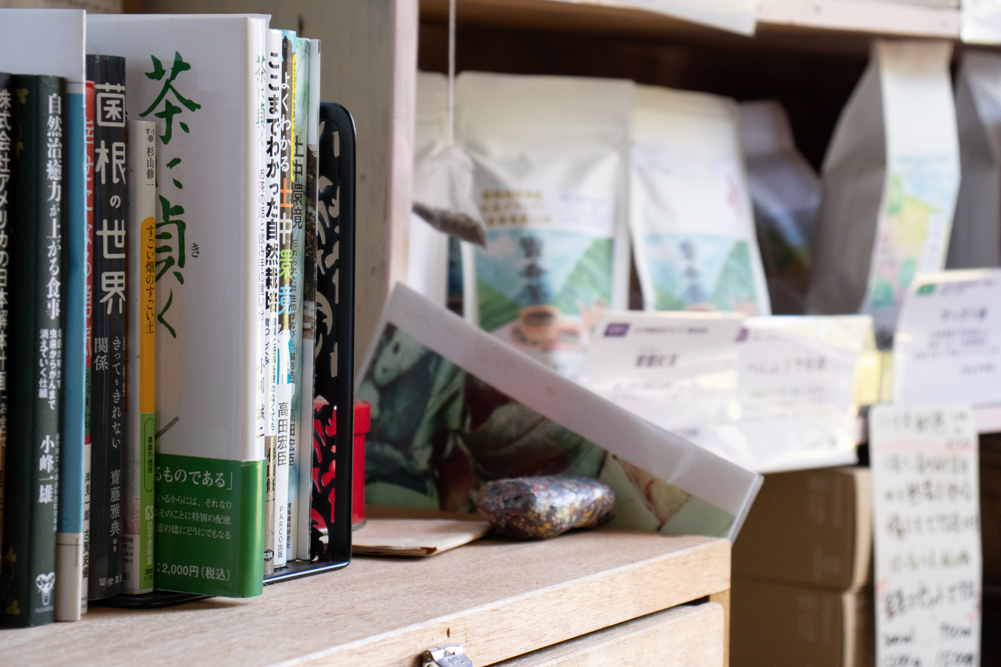
In Miyazaki, I spent about two and a half years living on-site to learn the craft of kamairi-cha (pan-fired tea).
After returning to Shizuoka, I continued travelling back and forth between Miyazaki and Shizuoka, exploring ways to bring out the distinctive character and appeal of kamairi-cha in my own work.
Before I knew it, more than twenty years had passed since I first began making tea.
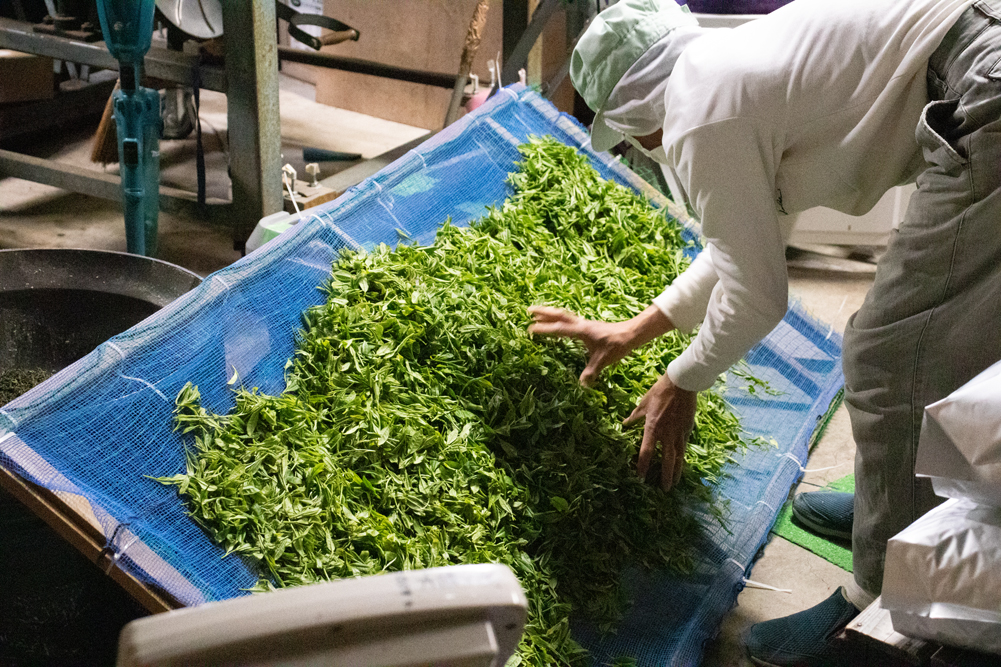
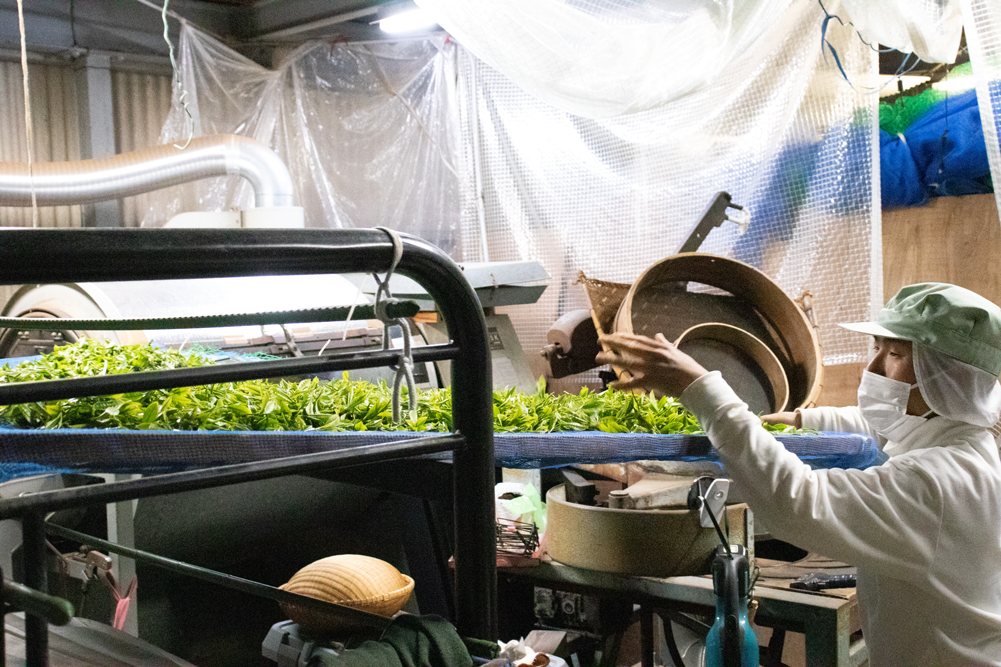
— Is that what eventually led you to producing aged tea?
Yes. There was a period when I tasted an extraordinary number of teas as part of my research into tea-making. One day, I revisited a tea I had made about four years earlier — and its depth of flavour took me by surprise. That experience opened my eyes to the potential of aged tea.
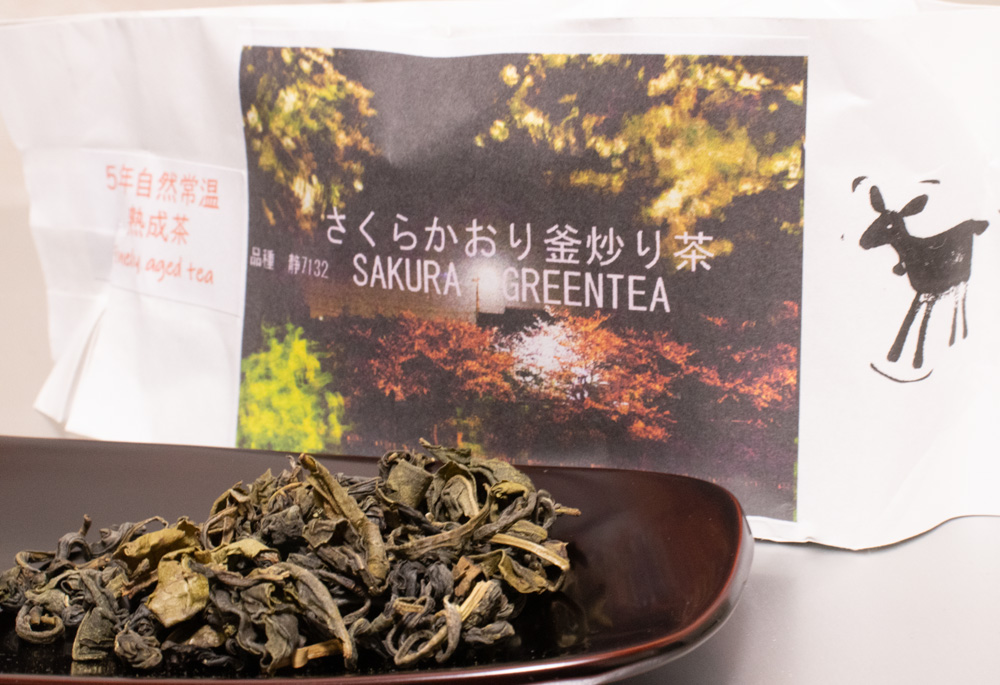 ▲Sakura Kaori — a pan-fired tea aged for five years at room temperature
▲Sakura Kaori — a pan-fired tea aged for five years at room temperature
The Aged Teas of Master Shibamoto: Time and Nature Woven Into a Singular Aroma
Aging tea is, I believe, an extraordinarily profound realm. To create a truly high-quality aged tea, you must return all the way to the cultivation stage and design every detail with meticulous precision.
This mikkoucha (honey-scented tea) – Benifuki is an award-winning tea from the 2021 Japan Domestic Black Tea Grand Prix, and it undergoes a full year of aging during production. In other words, the leaves used for this tea were picked from the fields in June 2020.
Because the ageing process adds significant value, it is difficult for us to offer this tea at a low price. However, once you try it, I am certain you will understand its appeal.
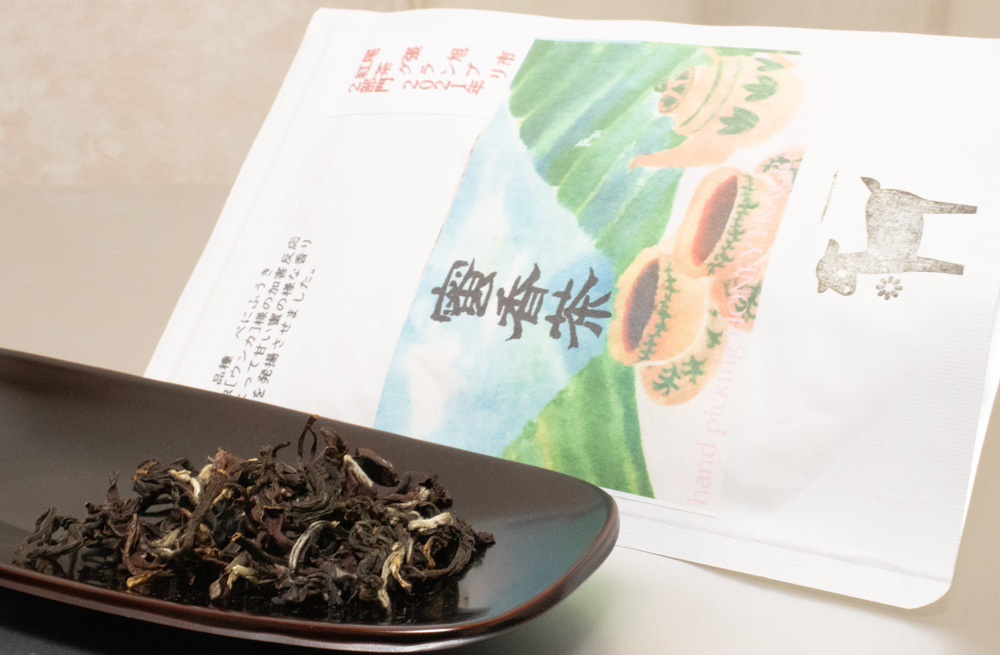
— It certainly has a wonderful aroma. Clean, elegant, and very easy to drink. Does aging transform tea into this kind of flavour?
Selecting the right raw material for aging is absolutely crucial. Generally, shincha (first flush tea)is designed so that its aroma and umami are perfectly balanced when the leaves are at peak freshness. In those cases, tea is usually at its best when consumed as is.
For such teas, aging can work against them.Contrarily, if the tea is designed to shine after one or two years, aging can instead bring out its full potential.
— It isn’t simply a matter of aging any tea you like, is it? But once aging comes into play, doesn’t it become quite difficult to achieve the same flavour every time?
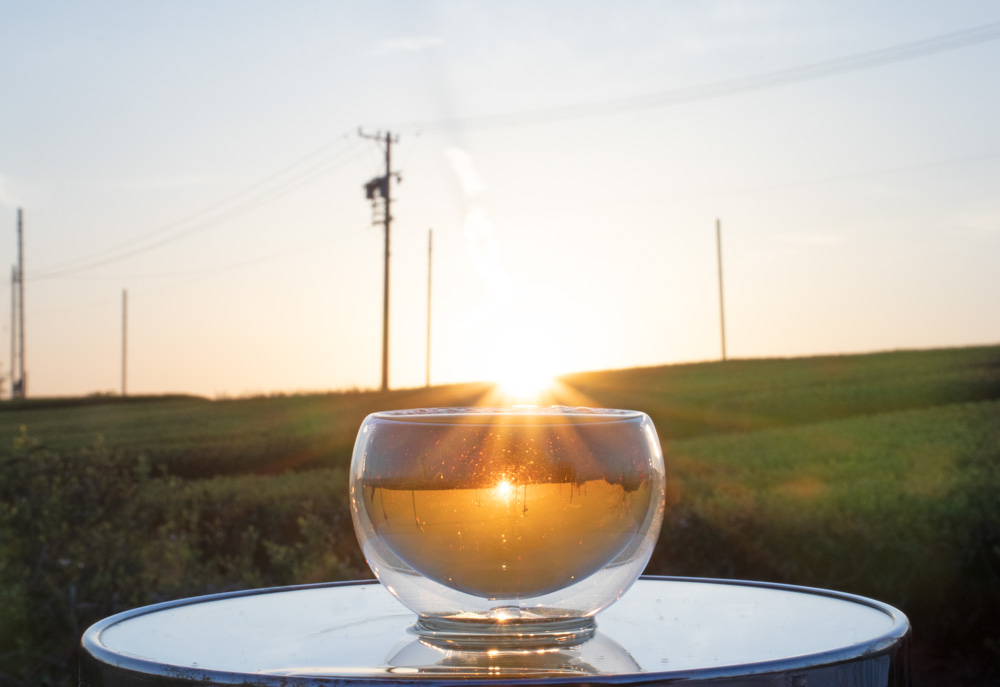
Yes—indeed, it is a demanding process that requires both time and considerable effort. Among all the teas at Kamairicha Shibamoto, it is the aged white tea that has the lowest reproducibility.
After all, it requires six full years to mature.
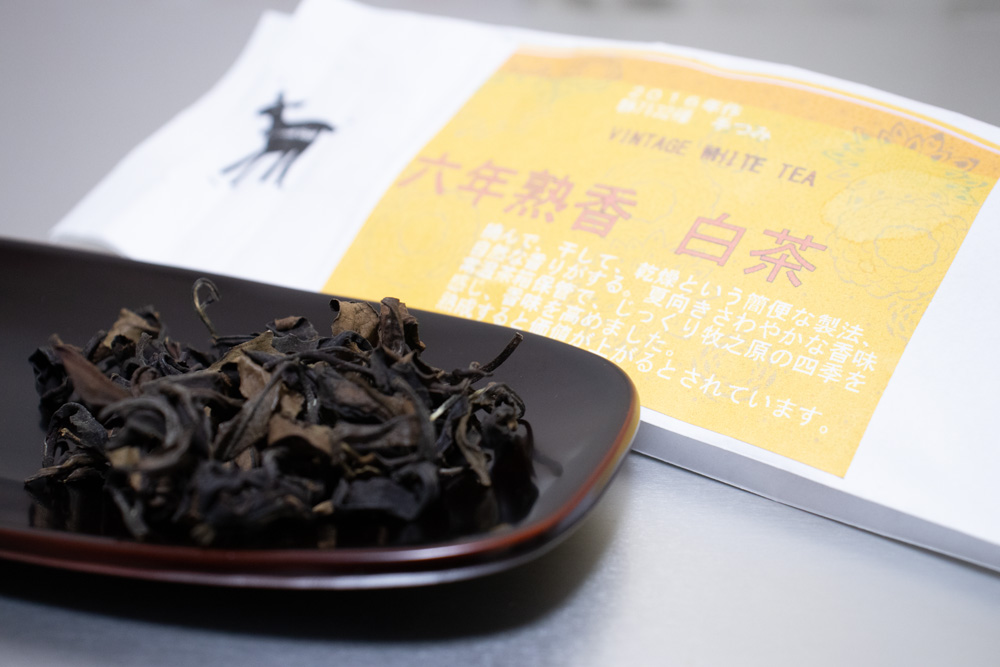
The lengthy aging period is something we simply cannot avoid. Without the willingness to “start aging the moment inspiration strikes,” we would never gain the data or insights we need.
As for black tea, production is only possible when the natural environment allows unka insects to thrive. Without that, the tea cannot even be made. That is why we must work in harmony with nature, never rushing it.
(※ During hot, humid summer months, tiny 2-millimetre insects known as unka settle on tea trees and nibble at the leaves. The enzymatic changes triggered by their feeding transform the leaf components, creating a fragrant, honey-like sweetness known as mikkou. In this way, highly prized ‘unka-bitten leaves’ used for fine black tea are formed.)
Driven to Bring Joy: Shibamoto’s Evolving Tea Craft. Connecting People with Teas Yet to Be Discovered
–You cultivate an impressive number of tea cultivars, don’t you, Shibamoto-san?
I do. Even when it comes to black tea alone, the aroma and flavour vary dramatically depending on the cultivar, the maker, the processing method, and the environment in which the leaves are grown.
When you find a cultivar you truly enjoy, I’d encourage you to try its aged version next.
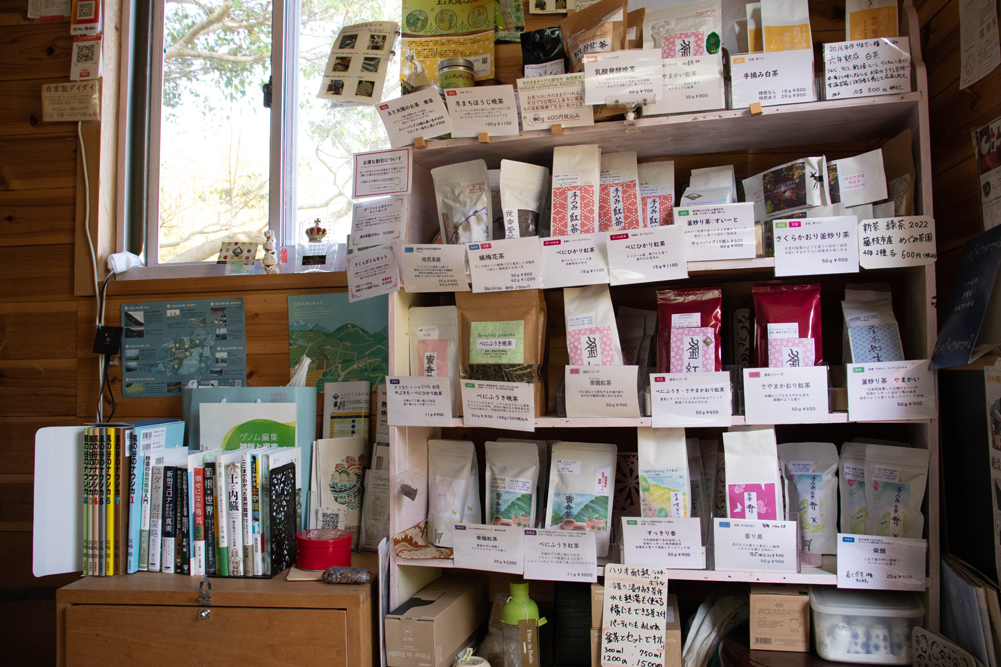
By experiencing how tea transforms through aging, I believe more people will discover a new way of enjoying tea — what I call ‘vintage tea’, defined by the number of years it has matured.
There are countless cultivars whose character becomes even more pronounced through aging.

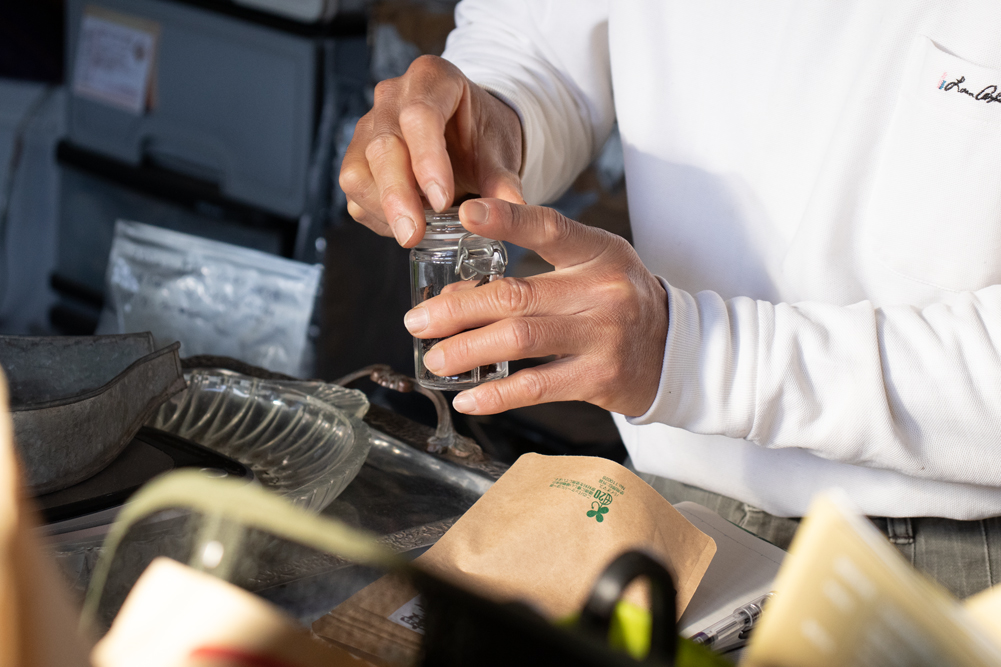
— Listening to you, it feels as if your passion lies not only in making tea, but in sharing the joy of tea with others.
There was a time when I was entirely absorbed in making the kind of tea I liked, without giving a thought to whether it delighted anyone else.
But one day I realised something important: what truly matters is creating tea that brings happiness to others.
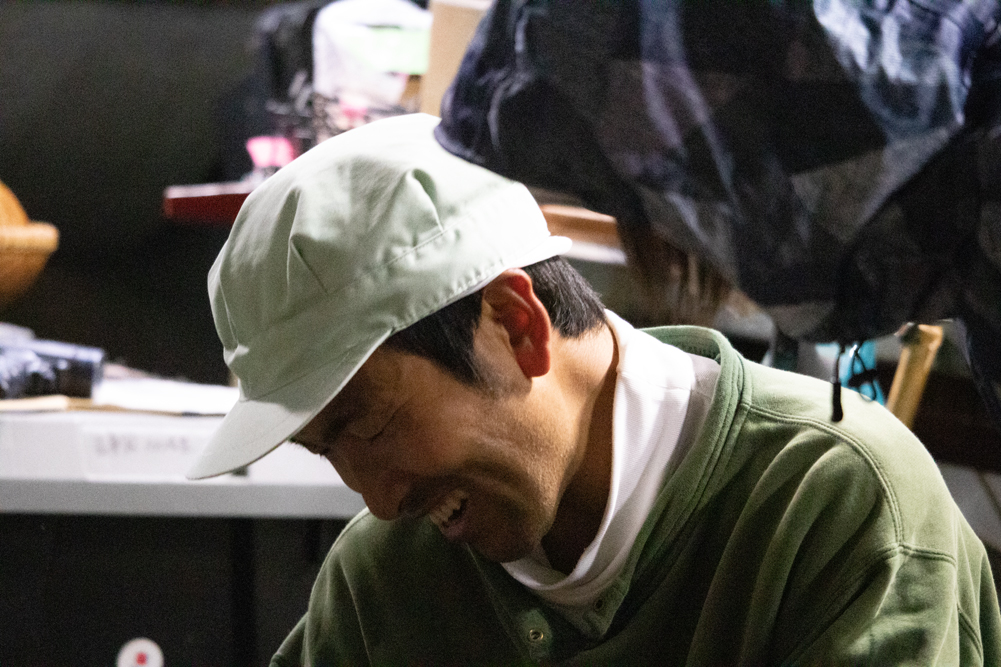
Since then, I’ve begun with research — understanding the kinds of tea everyday consumers are actually looking for.
That’s also why I produce black tea and oolong tea; without familiar entry points like these, it’s difficult for the general public to purchase our teas in the first place.
Over time, I’ve built up knowledge of cultivation and processing, and I’m now able to offer flavours that customers enjoy, expressed in a way that still feels uniquely ‘Shibamoto’. These days, I find real pleasure in that.
But to be honest, I want to take on a new challenge: to craft teas with wonderful, yet-undiscovered qualities — teas the world has not yet seen — and share them more widely.
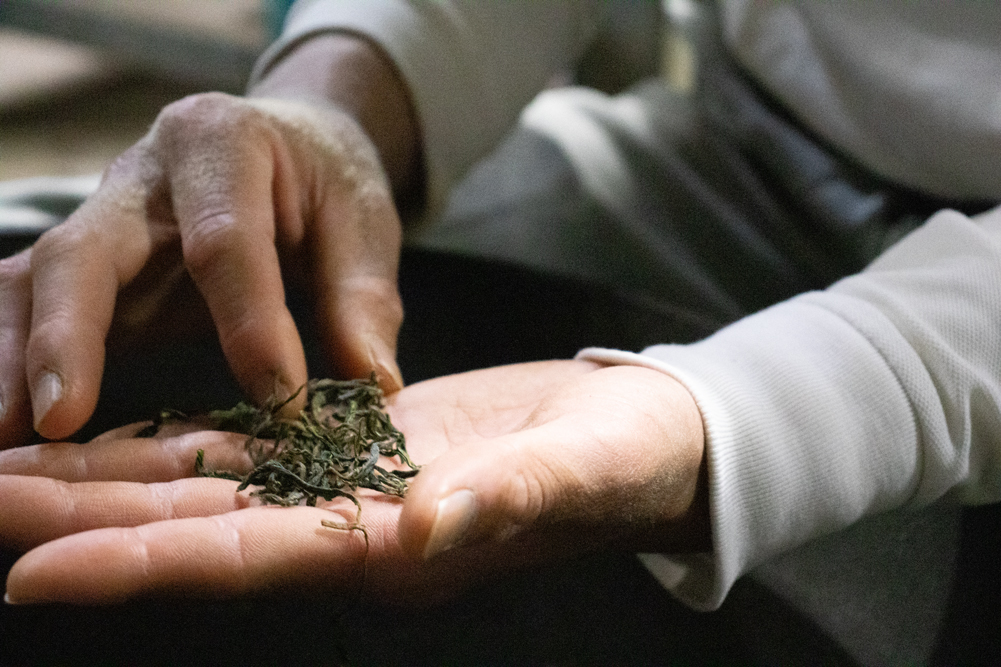
The world of tea is incredibly vast, filled with potential and possibilities unknown to most people. Through years of learning and refinement, I now understand that cultivating the right environment makes it possible to produce teas with astonishingly rich aromas.
One day, I hope to become a kind of bridge — someone who connects these unexplored realms of tea with the people who enjoy tea today. Perhaps this period is the time I need to prepare myself for that next step.
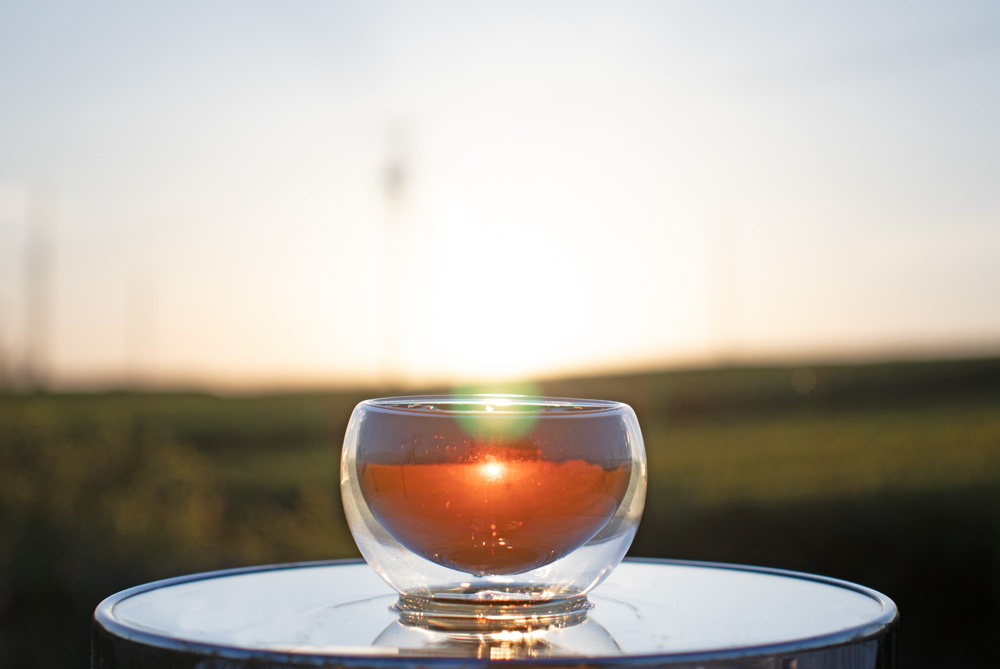
Related articles : Taste the Terroir of the tea-producing region Makinohara at Daichi no Chanoma【Makinohara City, Shizuoka Prefecture】
Information of Kamairicha Shibamoto
| Address | 2695 Katsumata, Makinohara, Shizuoka 421-0414, Japan |
| Website | https://kamacha.jimdofree.com/ |
| Phone number | 080-5295-7196 |
| E-money and credit cards | Partially e-money available |
| Open | 10:00~17:00 (Subject to change depending on the time of year) |
| Closed | non-scheduled holiday |
| Parking lot | A small number of parking spaces are available. |
| Access | 20 minutes by car from Tomei Sagara Makinohara IC, 10 minutes walk from Shibamoto-san’s house, the reception area, to the teahouse. |
| Writer | Norikazu Iwamoto |
| Career | Ochatimes chief editer. Meeting with Vice Governor of Shizuoka prefecture. Judge of Shizuoka 100 tea’s award in 2021~25. Ocha Times link introduced at website of World O-CHA(Tea) Festival 2022, Tea Science Center, The City of Green Tea Shizuoka, Ministry of Agriculture, Forestry and Fisheries. |
| English translator | Calfo Joshua |
| Career | Born and raised in England, living in Japan since 2016. Studying arboriculture in Shizuoka Prefecture whilst operating his landscape business Calfo Forestry. Appreciating the nature of Japan and the culture that places such importance in it. |


 Go to Japanese page
Go to Japanese page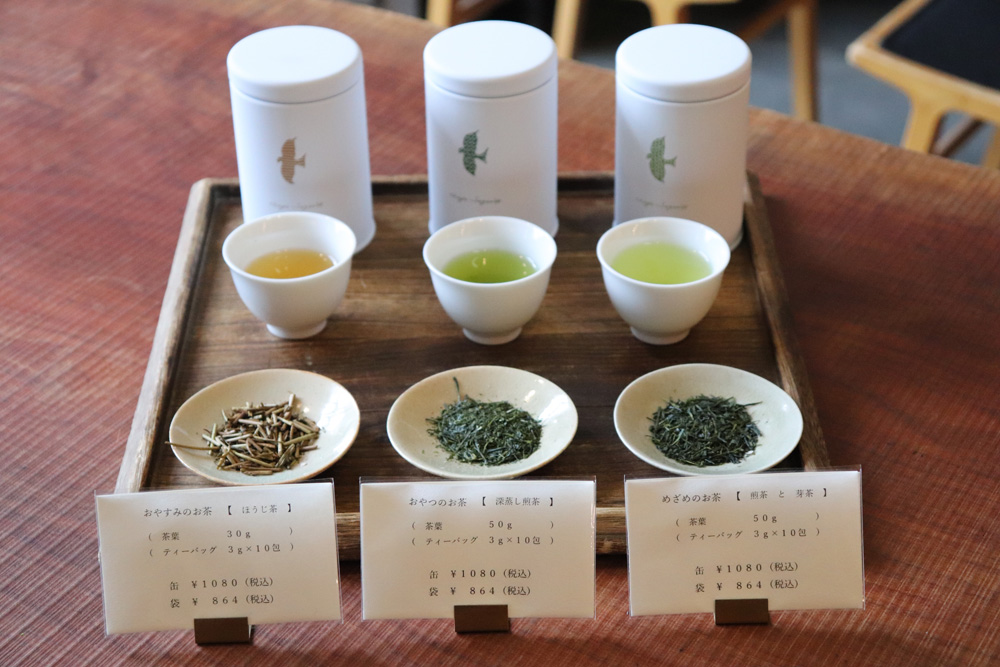
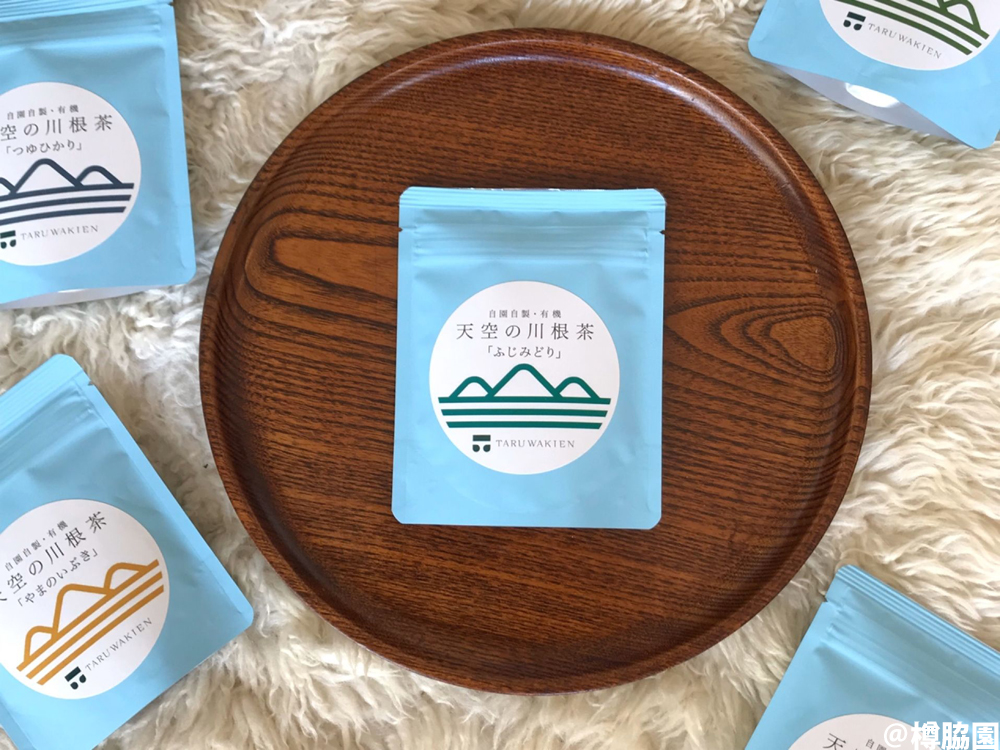
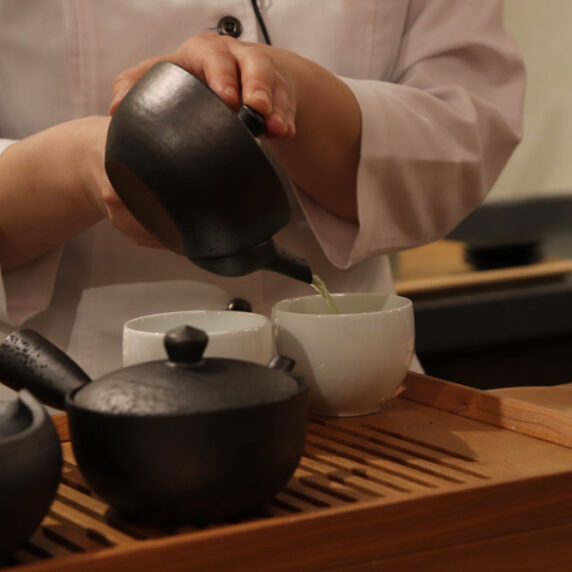
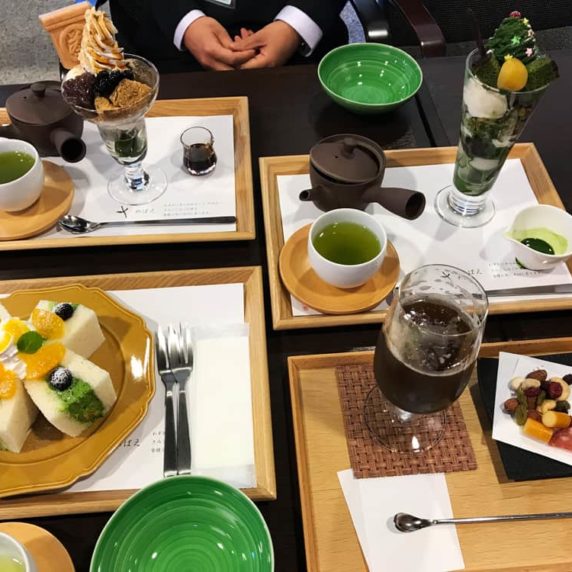

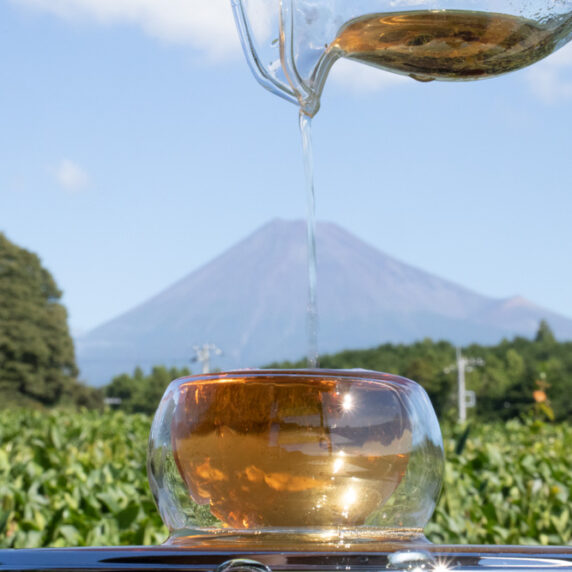




 on the red bar to close the slide.
on the red bar to close the slide. to see the
distance between the current location to the Chaya.
to see the
distance between the current location to the Chaya.